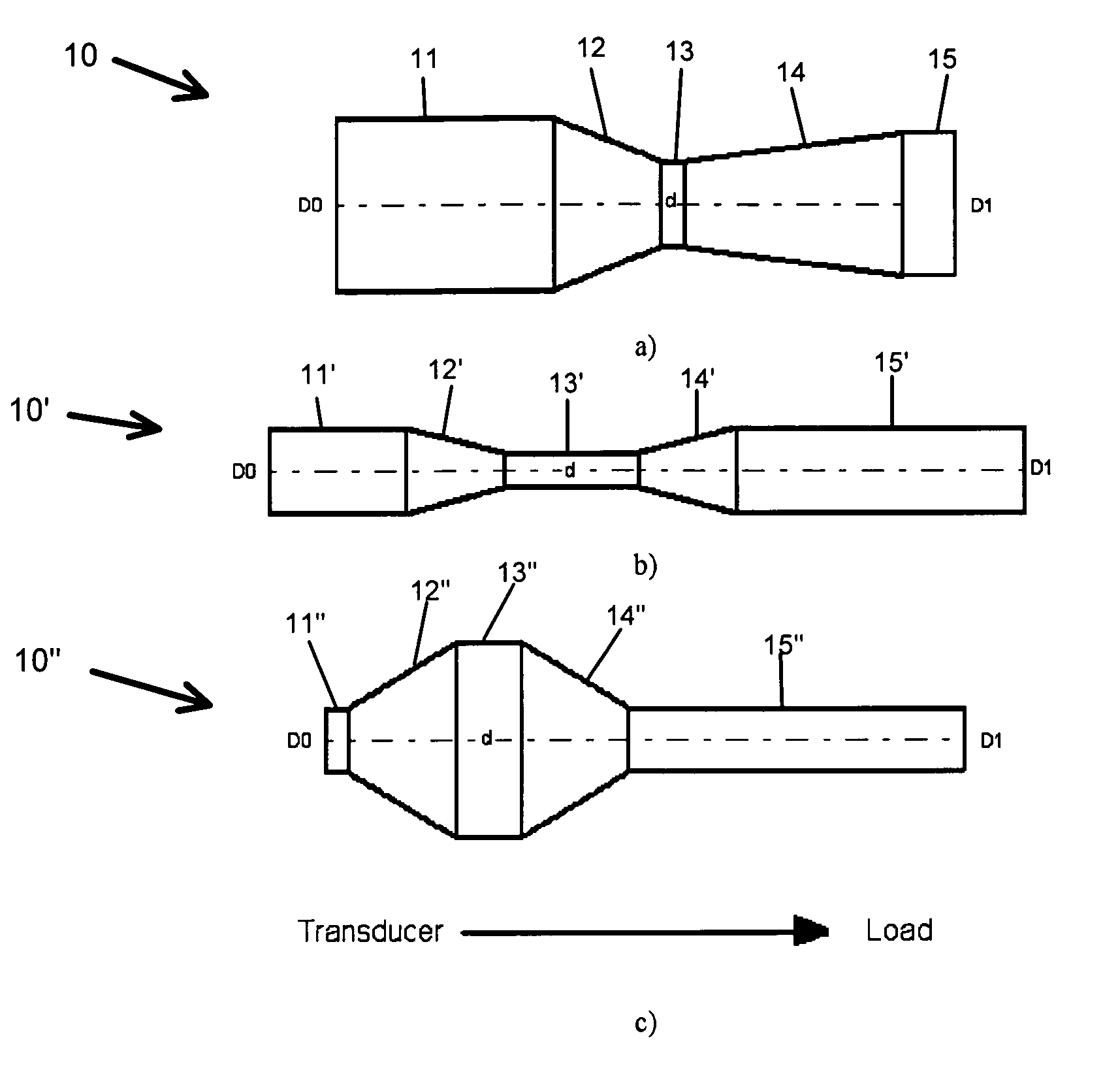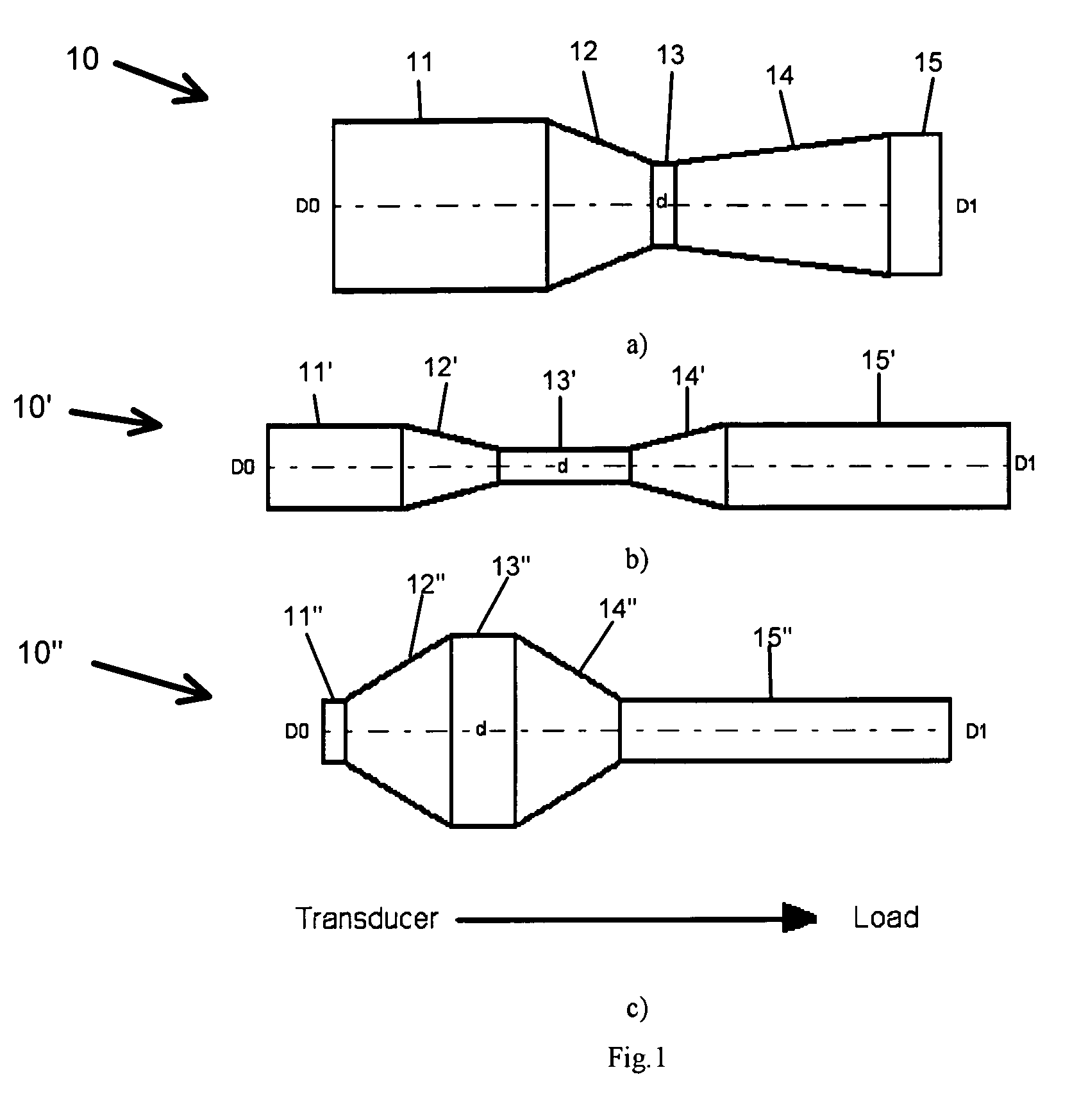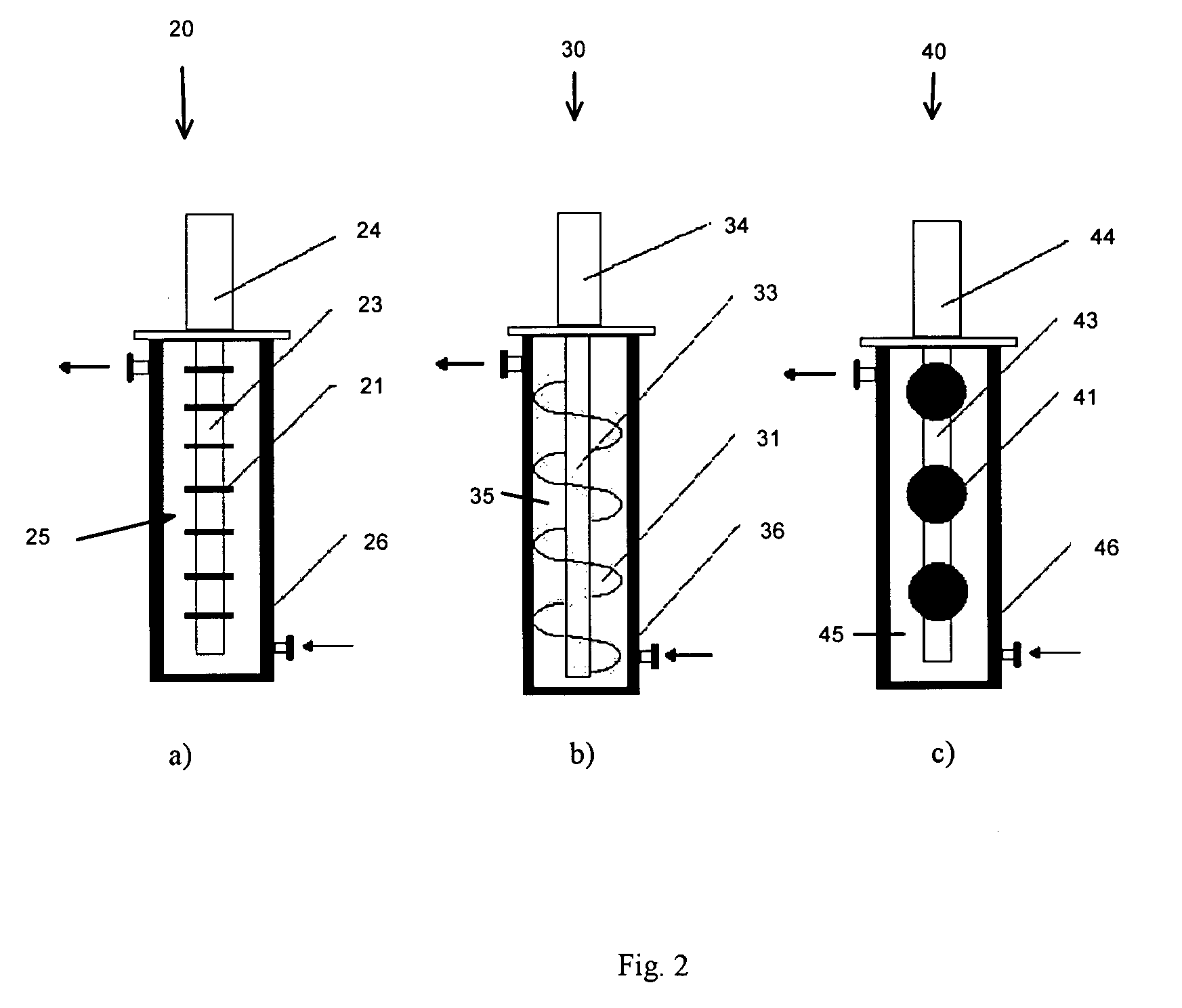Ultrasonic rod waveguide-radiator
a waveguide-radiator and ultrasonic technology, applied in the direction of mechanical vibration separation, instruments, machines/engines, etc., can solve the problems of affecting the operation regime affecting the quality of operation, and affecting the operation of the entire waveguide-radiator. , to achieve the effect of improving the operational life of the waveguide-radiator, improving the acoustic energy radiated, and improving the quality of operation
- Summary
- Abstract
- Description
- Claims
- Application Information
AI Technical Summary
Benefits of technology
Problems solved by technology
Method used
Image
Examples
Embodiment Construction
[0028]Referring now to the drawings, wherein like reference numerals refer to like parts throughout, there is seen in FIG. 1 a waveguide-radiator 10, 10′, 10″ according to the present invention. The improvement of the quality of operation and an increase in the operational life of a waveguide-radiator are achieved through the use of a waveguide-radiator shown in FIG. 1. The waveguide-radiator consists of five sections 11–15, 11′–15′, 11″–15″ in a combination of cylindrical sections 11, 13, 15, 11′, 13′, 15′, 11″, 13″, 15″ and sections of variable cross-section 12, 14, 12′, 14′, 12″, 14″, all made of metal. The cylindrical sections and variable cross-section sections alternate in series and are acoustically rigidly connected between themselves. The geometrical dimensions of these sections are selected using a known method of acoustic calculation (Rayleigh equation) in such a way that their total length is equal to the value that is a multiple of half the length of an acoustic wave in...
PUM
 Login to View More
Login to View More Abstract
Description
Claims
Application Information
 Login to View More
Login to View More - R&D
- Intellectual Property
- Life Sciences
- Materials
- Tech Scout
- Unparalleled Data Quality
- Higher Quality Content
- 60% Fewer Hallucinations
Browse by: Latest US Patents, China's latest patents, Technical Efficacy Thesaurus, Application Domain, Technology Topic, Popular Technical Reports.
© 2025 PatSnap. All rights reserved.Legal|Privacy policy|Modern Slavery Act Transparency Statement|Sitemap|About US| Contact US: help@patsnap.com



